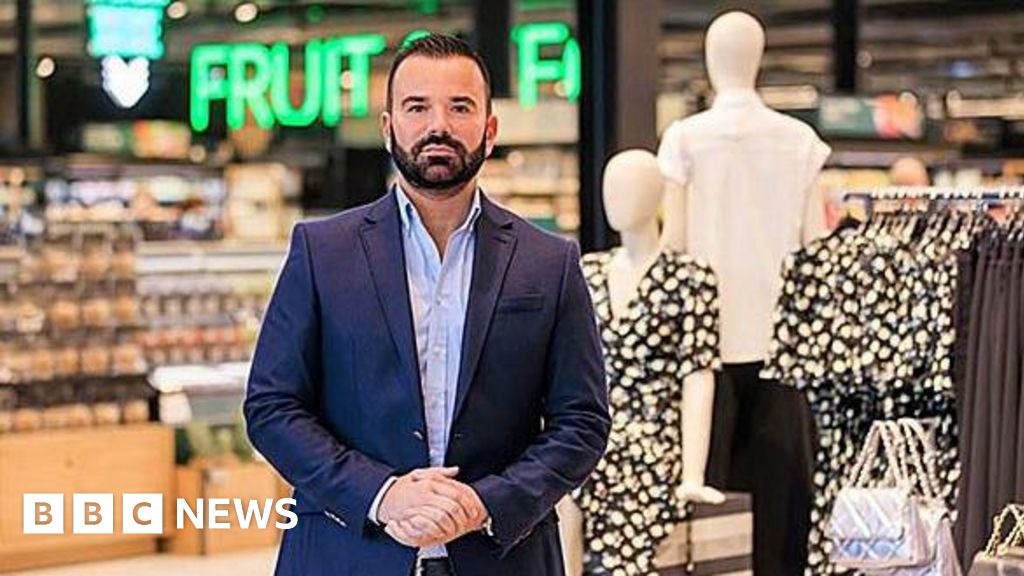News of the last 24 hours
All topics are curated by you, the community. Free from editorial bias, 100% independent. Upvote your favorite items, propose missing ones and shape the ranking of this topic.
This list features the most important news articles from the last 24 hours, covering major events, breaking news, and key developments across various topics. Updated daily, it provides a quick and comprehensive overview of the latest happenings, ensuring you stay informed with the most relevant and timely information.
This list presents the most significant news articles from the last 24 hours, offering a concise yet comprehensive overview of the latest developments. Whether it’s breaking news, global events, technology advancements, business updates, or cultural trends, this collection ensures you stay informed about the most relevant stories of the day. By curating the most impactful reports, the list serves as a reliable source for those who want to stay up to date without sifting through endless headlines.
Updated daily, this list reflects the fast-paced nature of the news cycle, bringing fresh insights into current affairs. Each article is carefully selected to highlight the most crucial updates, ensuring that you receive a well-rounded summary of the latest happenings. From major policy changes and economic shifts to scientific breakthroughs and entertainment highlights, the articles cover a broad range of topics, making it a valuable resource for readers with diverse interests.
The ranking of news articles is based on their significance, ensuring that the most pressing and widely impactful stories appear at the top. This helps readers quickly grasp the most important events before diving into other relevant but less urgent updates. As new information emerges, the list evolves to reflect the latest priorities, maintaining its role as a dynamic and trustworthy source of news.
With a focus on accuracy and timeliness, this list is designed to provide an efficient way to stay informed in a constantly changing world. Whether you’re catching up on the latest headlines in the morning or checking for updates throughout the day, it offers a streamlined experience, ensuring you never miss out on the stories that matter most.
-
Manchester City boss Pep Guardiola has put Rayan Ait-Nouri at the top of his list to solve his side's problematic left-back spot.
-
"Consumers are cooking at home at the highest levels since early 2020," the Campbell's CEO said Monday.
-
"CBS Sunday Morning" correspondent David Pogue sat down with entrepreneur Elon Musk days before he departed his post as a "special government employee" for the Trump administration. Pogue joined "CBS News Mornings" with more on Musk's comments on the congressional budget bill and DOGE's efforts.
-
Some communities on Florida's Gulf Coast are continuing to rebuild after Hurricanes Helene and Milton hit the region last year. The tourist hot spots are also trying to share a message that they're open for business. CBS News' Manuel Bojorquez has more.
-
This is a photo collection curated by AP photo editors.
-
The covert operation was described as one for the “history books” by Ukraine’s president
-
India had been due to host the entirety of the eight-team tournament in September and October
-
The 31-year-old has required an operation.
-
President Trump will speak with Chinese President Xi Jinping at some point in the near future, according to Treasury Secretary Scott Bessent. This comes after Mr. Trump said that China violated its trade agreement with the U.S. CBS News' Natalie Brand has the latest.
-
Taylor Swift announced she has taken ownership of the masters of her first six albums, ending a battle that began in 2019 when her discography up to that point was acquired by celebrity manager Scooter Braun. Swift said then that she wasn't given the opportunity to buy them herself and has since rerecorded four of the six albums.
-
The UK has recorded its warmest spring on record and its driest in more than 50 years, according to provisional Met Office figures.
-
Stuart Machin's money is not affected by the IT disruption but it will be considered for next year's pay.
-
How to avoid a common mistake many adults in their 20s make when saving for retirement, according to a certified financial planner.
-
SailGP's sports betting push is part of a broader strategic plan to attract new fans, drive deeper engagement and grow the league's popularity
-
Karol Nawrocki, the conservative Trump-backed candidate in Poland's runoff election, has narrowly won the presidential race. Charles Kupchan, a senior fellow at the Council on Foreign Relations, breaks down how the election results may affect NATO and Poland's relationship with the European Union.
-
The bill containing Trump's tax cuts and border and defense spending is expected to face some hurdles in the Senate.
-
The new sanitary and phytosanitary deal with the EU will eliminate routine border checks for food exports
-
Almost one in five patients with advanced melanoma survived for five years after receiving the innovative treatment
-
Footage shows clouds of dark coloured smoke and ash billowing from the volcano on the Mediterranean island.
-
From breakups to career changes, people are using ChatGPT to make life decisions. It’s convenient, but are we outsourcing too much?
“They don’t really make life decisions without asking ChatGPT what they should do.” That’s what OpenAI CEO Sam Altman said about Gen Z during a talk at Sequoia Capital’s AI Ascent event recently.It wasn’t exactly shocking, more like confirmation of something many of us already suspected and what AI research points to. People are using ChatGPT for far more than proofreading emails or brainstorming ideas these days. It’s become a tool for thinking, weighing up options, and sometimes, making deeply personal decisions.In many ways, this makes sense, especially for Gen Z. This is a generation that grew up online, shaped by climate anxiety, economic instability, and digital intimacy. Turning to an AI tool like ChatGPT for life advice might seem concerning to some of us, but it also tells us something more interesting about how we think, trus,t and make decisions now.And, while Altman was specifically talking about Gen Z here, they’re not the only ones using ChatGPT this way. His broader point was that ChatGPT usage shifts by age group. Gen Z tends to treat it like “an operating system,” while people in their 20s and 30s use it more like a life advisor. Older users, he said, tend to treat it like a smarter search engine and a replacement for Google.I’m in my late 30s, and I see plenty of people in my millennial cohort doing exactly this. Asking it to vibe check an email one minute, offer career advice the next, or decode a cryptic text from a date.So the big question is: should we be using ChatGPT in this way? Is it a sign of democratized support and important self-reflection? Or is it troubling how comfortable we’ve become with outsourcing our most human struggles to a machine trained on the internet? Like most things with AI, I suspect the truth is somewhere in between.The benefits of asking ChatGPT for adviceLet’s start with the positives, because there are real ones. AI tools like ChatGPT are always available. They don’t judge, interrupt or charge $100 an hour. For people without access to mentors, therapists or career coaches, that kind of always-on advice can feel like a lifeline.When I looked into the rise of people using ChatGPT for therapy-style support earlier this year, accessibility was a consistent theme. It’s cheap, available 24/7, and crucially, private. You can ask it anything without fear of embarrassment or judgment.And the value isn’t just in “replacing” a therapist or coach. Sometimes it’s about having a space to think out loud. Want to explore a big move? Test out the idea of quitting your job? Wonder how others have handled long-distance relationships or an ADHD diagnosis? You can prompt, explore, and revise, and no one has to know.There’s also an unexpected upside when it comes to metacognition, which is the ability to reflect on your own thoughts. ChatGPT can help you do that by summarizing what you’ve said, asking clarifying questions, or suggesting different perspectives. For neurodivergent users, especially those with ADHD or anxiety, that kind of structured reflection can feel incredibly supportive. I’m starting to think that the real value here might not be that it gives you the answer, but that it helps you find your own.The risks of letting AI guide our livesBut this new way of making decisions also comes with some serious concerns.Firstly, algorithms aren’t wise. ChatGPT can mimic empathy, but it doesn’t feel it. It can sound measured, even thoughtful, but it has no intuition, gut instinc,t or lived experience. It can’t tell when you’re lying to yourself. It doesn’t know when the thing you didn’t say is the most important part.Then there’s the issue of bias. Large language models like ChatGPT are trained on massive datasets, which means they absorb the internet’s mess of assumptions, blind spots, and cultural biases.There’s also a clear accountability gap here. If a therapist gives you bad advice, they’re responsible. If a friend leads you astray, at least they care. But if ChatGPT nudges you towards a major life decision that doesn’t work out, then who do you blame?We already know generative AI can hallucinate, meaning it can make things up that are completely untrue or misleading. It also has a tendency to be overly optimistic and encouraging, which is helpful in some scenarios but not always what you need when you’re grappling with something serious.Psychologists have also raised concerns about replacing real relationships with AI-driven feedback loops. A chatbot might make you feel “seen” without truly understanding you. It might offer closure you haven’t earned. It might flatter your logic when what you actually need is someone to challenge it.And we can’t ignore the bigger picture. It’s in OpenAI’s best interest for people to use ChatGPT for everything, especially life advice and emotional support. That’s how it becomes indispensable. And with upgrades like advanced memory, the tool gets better the more it knows about you. But the more it knows, the harder it is to walk away.The trade-off we don’t always seeIt’s not enough to say using ChatGPT for life advice is either good or bad. That flattens a far more complex reality.Gen Z isn’t turning to AI because they don’t realize ChatGPT lacks lived experience or because they think it’s better than a therapist. I suspect most are doing it because the world feels unstable, overwhelming, and hard to navigate. In that context, a chatbot that’s always available, never tired, and oddly wise-sounding might feel safer than asking a parent, teacher, or boss.And this isn’t just a Gen Z trend. We’re living through a time when guidance is fragmented, authority is suspect, and certainty is scarce. Of course, people of all ages will increasingly reach for a tool that offers what feels like instant and convenient clarity.But what are we giving up when we do? I ask that because I’m not immune to this either. I write critically about AI. I regularly talk about its limits, the need for caution, and the risks of over-reliance. And yet I’ve asked ChatGPT questions I probably could have chatted about with someone I know. Did it give me a quicker answer? Maybe. A better one? Probably not. Did I miss an opportunity for real connection? Definitely.And that’s the deeper issue. It’s easy to criticize this trend from a place of privilege. If you have offline relationships, trusted friends, and a family you can call. But not everyone does. For many, AI is filling a gap left by broken systems, absent support, and rising feelings of loneliness and disconnection.Used thoughtfully, I do think ChatGPT can be a helpful companion. A way to untangle thoughts, explore perspectives, and even rehearse difficult conversations. That’s why I’d never tell people not to use it for these things. But I would urge them to ask: why am I turning to this now? What might I be avoiding? And who else could I talk to instead? Then again, what do I know? I’m just an elder millennial.You might also like5 ChatGPT prompts to inspire your creativitySam Altman's newest venture has built a robot to decide if you're humanOpenAI Operator is getting bigger brains to control the AI agent’s virtual hands -
The CDC says kids 6 months and older with no underlying health conditions can receive the COVID-19 vaccine in consultation with their doctor. The changing guidance comes after HHS Secretary Robert F. Kennedy Jr. said last week they would no longer recommend the vaccine for healthy children. CBS News medical contributor Dr. Celine Gounder breaks down what to know.
-
Ukraine says a drone attack took out more than one-third of Russia's strategic bombers, hitting five airfields. On Monday, at least six people were injured as Russia launched two ballistic missiles and more drones in Ukraine's northeast. Meanwhile, peace talks between the two countries are resuming in Istanbul.
-
TechRadar Pro is in San Francisco and ready for Snowflake Summit 2025.
We're reporting live from Snowflake Summit 2025 in San Francisco to bring you all the key details from the company's keynotes.First up this evening, a welcome keynote from Snowflake CEO Sridhar Ramaswamy who will begin by exploring how AI has impacted all organizations. He'll be joined by OpenAI Founder and CEO Sam Altman to discuss the future of AI.Tomorrow, we'll get into what's new for Snowflake, so stay tuned for all the updates as they happen!It's day one of Snowflake Summit 2025, and our priority is heading over to the registration desks for badge collection. The main event starts tomorrow, but tonight we're being welcomed by Snowflake CEO Sridhar Ramaswamy who will be joined by OpenAI's Sam Altman. -
US banks aren't happy about having to disclose cyberattacks.
US banks are pushing back against a cyberattack disclosure ruleThe banks say its adds complexity and strain to their systemsBanks especially don't want to disclose ongoing cyberattacksA group of US banks is pushing back against a recent US Securities and Exchange Commission (SEC) ruling which requires public companies, including banks, to disclose cyber attacks.The banks argue that the ruling adds unnecessary strain and complexity to their operation, and potentially requires the disclosure of cyber incidents before internal investigations have been completed, and the scope of the damage assessed.The group's members include the American Bankers Association (ABA), the Bank Policy Institute (BPI), the Securities Industry and Financial Markets Association (SIFMA), the Independent Community Bankers of America (ICBA) and the Institute of International Bankers (IIB).SEC and banks butt headsThe rule, known formally as the “Cybersecurity Risk Management, Strategy, Governance, and Incident Disclosure Rule", was introduced in July 2023.Not only does it outline disclosure procedures for cyber incidents, such as impact, timings and scope of the incident, but also requires public companies to provide a report on their cybersecurity risk management, strategy and governance practices each year.A public statement issued by the Bank Policy Institute said, "This rule requires public companies to disclose material cyber incidents within four business days, adding to an already complex list of reporting and disclosure obligations that financial institutions and other critical infrastructure sector companies must follow. The Department of Homeland Security issued a report in 2023 identifying 45 different federal cyber incident reporting requirements, administered by 22 federal agencies."The banks also argue that the rule could apply additional pressure on banks and their customers during ransomware attacks, as the attackers could point out unfulfilled disclosures as a means of extortion.The banking group lobbied against the rule in 2023, and requested a 12 month extension to data protection and cybersecurity amendments requirements.Similarly in Australia, a new rule has come in to force that requires all organizations with an annual turnover of AUS $3m ($1.93M) to disclose ransomware payments within 72 hours, including amount, currency, and timings of communications with the attackers.Via Infosecurity MagazineYou might also likeTake a look at the best antivirusI've rounded up the best password managersCritical milestone: how new SEC rules affect business cybersecurity -
Avoid this common trap that ‘makes decisions harder and your life worse’—take 3 simple steps instead
People take way to long to make decisions, says Nell Wulfhart, a decision coach who's helped more than 500 clients. Take three simple steps to speed things up.
-
While the inflationary impact on U.S. domestic prices is widely expected to be severe, the effect in Europe will be more mixed, according to analysts.
-
Israeli soldiers have barred journalists from entering villages in the West Bank on a planned tour organized by the directors of Oscar-winning movie “No Other Land."
-
Old Dominion will release their new album, “Barbara,” on Aug. 22
-
Watch a live view of Mount Etna’s eruption in Sicily, Italy, with a huge column of smoke and ash spewing into the sky above the Italian island on Monday (2 June).
-
The young girls, ages 5, 8, and 9, were last seen Friday around 5 p.m. in Wenatchee, Washington.
-
Killer Andrew Griggs tried to manipulate his son into digging up his mother’s remains in a chilling plot to clear his own name
-
Stocks rebounded from steep April losses, but ETF flows from investors show they remain worried about the U.S. market rally's strength.
-
The Minstermen missed out on a return to the Football League as they lost in the play-off semi-finals to Oldham.
-
Economy minister Caoimhe Archibald attended the announcement by ANGOKA.
-
New rumors suggest the iPhone 17 could launch with the same A18 chipset as the iPhone 16, but it might also get a smaller, more capable Dynamic Island.
The iPhone 17 may not get a chipset upgrade, according to a noted analystBut a smaller and more efficient Dynamic Island could be added insteadOther iPhone 17 models are expected to get chipset upgradesA noted industry analyst has suggested that the iPhone 17 might not get a processor upgrade, instead launching with the same chipset as the current-generation model.Jeff Pu, Apple analyst at equity research firm GF Securities, has suggested the next iPhone will skip the usual chipset upgrade and continue to use the A18 chipset found in the iPhone 16 and iPhone 16 Plus.If this tipoff turns out the be true, it’d be Apple’s second time launching a phone without a chipset upgrade. In 2022, the iPhone 14 and iPhone 14 Plus launched to mixed reactions when it was revealed that Apple had equipped both phones with the same A15 chipset found in the iPhone 13 and iPhone 13 mini.As PhoneArena reports, the iPhone 17 could be the only iPhone 17 launch model to come with an A18 chipset – the iPhone 17 Pro and iPhone 17 Pro Max are both expected to get the A19 Pro chipset, while the new iPhone 17 Air is tipped to get the A19.Minor design differencesWhile the iPhone 17 Pro is tipped to get a design overhaul (Image credit: Front Page Tech / @asherdipps)So, is Apple in for a second round of side-eye from critics and customers? Maybe. If the latest iPhone 17 rumors are to be believed, Apple’s next base-model flagship will be the only one not to get some kind of major redesign with this year’s series.The iPhone 17 Pro and Pro Max are expected to get large camera bars a la the Google Pixel 9, and the iPhone 17 Air is tipped to get a new thin-and-light chassis with a single camera.That would leave the regular iPhone 17 as the only one of its series without some kind of design update, drawing even more attention to its similarities to last year’s model.A new Dynamic Island?The iPhone 17 Pro is tipped to get a smaller Dynamic Island (Image credit: Apple)Separate rumors suggest that the next vanilla could at least benefit from a Dynamic Island upgrade coming to the entire iPhone 17 lineup.Prior hints from Jeff Pu pointed to a reduced Dynamic Island using a metalens for Face ID, meaning a lens that compacts the transmitter and receiver into one component. As MacRumors reports, the suggestion was shared in an investor note issued by Pu earlier this month.However, fellow Apple analyst and well-regarded tipster Ming-Chi Kuo said in January that they don’t expect much of a change when it comes to the size of the Dynamic Island.We're expecting the iPhone 17 series to launch later this year. Would you buy an iPhone 17 that doesn’t come with an upgraded chipset? Would a smaller Dynamic Island be enough of an update to its design? Let us know in the comments below.You might also likeI spent a week testing the Honor 400 Pro, and it's a powerful almost-flagship with some fancy AI tricksWhat’s your favorite Android phone of all time? Let us knowI’m an iOS loyalist – here’s why Android has never tempted me to switch -
Trade tensions heated up over the weekend, and Boeing lands a big upgrade.
-
The market outlook has improved, but only slightly, according to RBC Capital Markets.
-
Shares have struggled in 2025, falling 2%, but have soared 88% over the past 12 months.
-
Senators are picking through the Republican budget bill after it narrowly passed the House. Changes are expected to be made to the reconciliation package, as several Republicans voice concerns over the nation's deficit and potential Medicaid cuts. Mia McCarthy, a reporter for POLITICO, joins "CBS News Mornings" with more.
-
Aziz Ziriat went missing on 1 January while hiking in the Dolomites with his friend Sam Harris.
-
A suspect was taken into custody after an attack on Pearl Street Mall in Boulder on June 1. Six people were injured when witnesses said the suspect threw Molotov cocktails that burned the victims, who were part of a march for Israeli hostages.
-
Police say a man used a makeshift flamethrower to try to set people on fire at a weekly march in Boulder, Colorado, that raises awareness for Israeli hostages in Gaza. Officials say eight people were hurt and a suspect is in custody.
-
Smarter by CNBC Make It's online course provides expert advice on how to prepare financially, avoid costly mistakes, and take smart steps toward homeownership.
-
A system of thousands of ridges and canals across a floodplain in southern Iraq has long been believed to be the remnant of a massive agricultural system built by slave labor
-
From Jade and Kesha to the Vengaboys and Craig David, the weekend felt like a gloriously unapologetic celebration of pop, queerness, and nostalgia
-
Police say the number of people injured when a car drove into crowds in Liverpool has risen.
-
‘It’s over for short men,’ one user claimed
-
As the nation’s top health official, Robert F. Kennedy Jr.’s stark comments about children with autism have splintered a community of millions of people who are living with the disorder.
-
Mount Etna, on the east coast of Sicily, between the cities of Messina and Catania, is one of the world’s most active volcanoes
-
Root reached the milestone with his highest format score, matching his Test achievement from last year.
















































